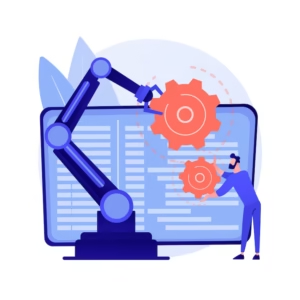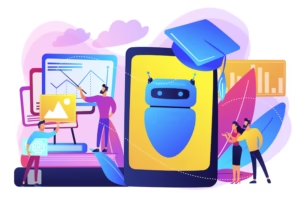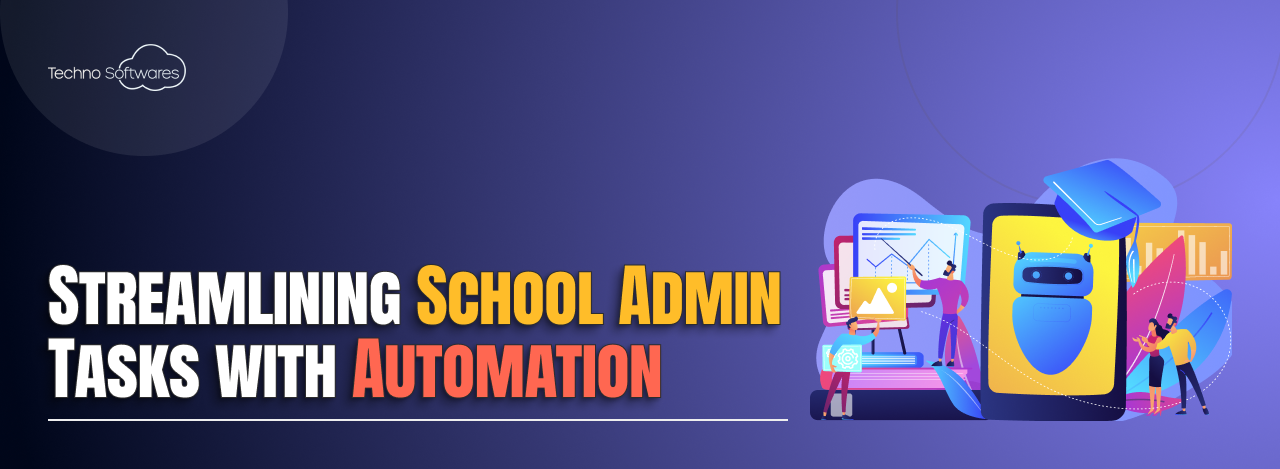How Automation Can Streamline Administrative Tasks in Schools and Universities
In recent years, we have witnessed a significant shift in the way educational institutions operate, largely driven by the advent of automation. The benefits of automation in education are manifold, enhancing both teaching and administrative processes. By integrating automated systems, we can streamline operations, reduce human error, and ultimately create a more efficient learning environment.
This transformation not only saves time but also allows educators to focus on what truly matters: fostering student engagement and learning. Moreover, automation can lead to improved data management and analysis. With automated systems in place, we can collect and analyze vast amounts of data related to student performance, attendance, and engagement.
This data-driven approach enables us to make informed decisions that can enhance educational outcomes. By identifying trends and patterns, we can tailor our teaching methods to better meet the needs of our students, ensuring that no one is left behind in the learning process.
Key Takeaways
- Automation in educational institutions can lead to increased efficiency, reduced human error, and cost savings.
- Streamlining administrative tasks through automation can free up time for educators to focus on teaching and student engagement.
- Implementing automation with techno softwares can help educational institutions manage admissions, student records, and communication more effectively.
- Techno softwares can improve efficiency in educational institutions by automating grading, attendance tracking, and resource allocation.
- Case studies show successful implementation of automation in schools and universities, resulting in improved productivity and student satisfaction.
How Automation Can Streamline Administrative Tasks in Schools and Universities
Administrative tasks in educational institutions can often be overwhelming, consuming valuable time and resources. However, by embracing automation, we can significantly streamline these processes. For instance, tasks such as enrollment management, grading, and scheduling can be automated, allowing staff to focus on more strategic initiatives.
This not only enhances productivity but also reduces the likelihood of errors that can arise from manual data entry. Furthermore, automation can improve communication within educational institutions. Automated systems can facilitate timely notifications regarding important deadlines, events, and announcements.
By keeping everyone informed, we foster a more cohesive community where students, faculty, and staff are aligned and engaged. This enhanced communication can lead to a more positive educational experience for all stakeholders involved.
Implementing Automation with Techno Softwares

To fully harness the benefits of automation in education, we must consider the implementation of specialized software solutions. Techno Softwares offer a range of tools designed specifically for educational institutions, enabling us to automate various processes effectively. From learning management systems (LMS) to student information systems (SIS), these technologies provide us with the infrastructure needed to support automation.
When implementing Techno Softwares, it is crucial for us to assess our specific needs and objectives. By identifying the areas where automation can have the most significant impact, we can select the right tools that align with our goals. Additionally, training staff on how to use these technologies is essential for successful implementation.
By investing in professional development, we ensure that everyone is equipped to leverage automation effectively.
How Techno Softwares can Help Improve Efficiency in Educational Institutions
Techno Softwares play a pivotal role in enhancing efficiency within educational institutions. By automating routine tasks such as grading and attendance tracking, we free up valuable time for educators to focus on instruction and student support. This shift not only improves the overall quality of education but also contributes to higher job satisfaction among faculty members who can dedicate more time to their passion for teaching.
Moreover, these software solutions enable us to centralize information and resources. With a unified platform for managing student data, course materials, and communication channels, we can eliminate redundancies and ensure that everyone has access to the information they need. This centralized approach fosters collaboration among faculty and staff while providing students with a seamless learning experience.
Case Studies: Successful Implementation of Automation in Schools and Universities
Examining case studies of successful automation implementation in educational institutions provides us with valuable insights into best practices and potential outcomes. For instance, a university that adopted an automated enrollment system reported a 30% reduction in processing time for applications. This efficiency not only improved the experience for prospective students but also allowed admissions staff to allocate more time to outreach and recruitment efforts.
Another notable example is a high school that implemented an automated grading system. Teachers found that they could provide timely feedback to students without being bogged down by paperwork. As a result, student performance improved significantly, as learners received immediate insights into their progress.
These case studies illustrate how automation can lead to tangible benefits in both administrative efficiency and educational outcomes.
Overcoming Challenges in Implementing Automation in Educational Institutions

While the advantages of automation are clear, we must also acknowledge the challenges that come with its implementation. Resistance to change is a common hurdle; many educators may feel apprehensive about adopting new technologies or fear that automation could replace their roles. To address these concerns, it is essential for us to foster an open dialogue about the benefits of automation and how it can enhance rather than diminish the educational experience.
Additionally, budget constraints can pose significant challenges when it comes to investing in automation technologies. We must carefully evaluate our financial resources and prioritize spending on tools that will yield the greatest return on investment. Seeking grants or partnerships with technology providers can also help alleviate some of the financial burdens associated with implementing automation.
The Future of Automation in Education
As we look ahead, the future of automation in education appears promising. With advancements in artificial intelligence (AI) and machine learning, we can expect even more sophisticated tools that will further enhance our ability to personalize learning experiences. These technologies will enable us to analyze student data in real-time, allowing for adaptive learning pathways that cater to individual needs.
Moreover, as remote learning continues to gain traction, automation will play a crucial role in facilitating online education. From automated assessments to virtual classrooms equipped with AI-driven tutoring systems, we are on the brink of a new era in education where technology seamlessly integrates with teaching and learning processes. Embracing these innovations will be essential for us to remain competitive and effective in delivering quality education.
Embracing Automation for a More Efficient Educational System
In conclusion, embracing automation within educational institutions is not merely a trend; it is a necessary evolution that promises to enhance efficiency and improve educational outcomes. By streamlining administrative tasks and leveraging Techno Softwares, we can create an environment where educators are empowered to focus on teaching while students receive personalized support tailored to their needs. As we navigate the challenges associated with implementing automation, it is crucial for us to remain committed to fostering a culture of innovation and collaboration within our institutions.
By doing so, we position ourselves at the forefront of educational advancement, ensuring that we are well-equipped to meet the demands of an ever-changing world. Ultimately, embracing automation will lead us toward a more efficient educational system that benefits all stakeholders involved—students, educators, and administrators alike.
If you are interested in learning more about how Techno Softwares can help you implement automation for efficiency in educational institutions, you may want to check out their article on custom WordPress development services. This article provides insights into how customized software solutions can streamline processes and improve overall productivity. By leveraging their expertise in technology, Techno Softwares can help schools and universities optimize their administrative tasks and enhance the learning experience for students.
FAQs
What are some common administrative tasks in schools and universities that can be automated?
Some common administrative tasks that can be automated in schools and universities include student enrollment and registration, attendance tracking, grading and report card generation, scheduling and timetabling, communication with parents and students, and financial management.
How can automation streamline administrative tasks in schools and universities?
Automation can streamline administrative tasks by reducing manual data entry, minimizing errors, improving efficiency, and freeing up staff time to focus on more strategic initiatives. It can also provide real-time access to information, improve communication, and enhance overall productivity.
How can Techno Softwares help in implementing automation for efficiency in schools and universities?
Techno Softwares offers a range of software solutions specifically designed for educational institutions. These solutions can automate various administrative tasks such as student information management, attendance tracking, grading, scheduling, and communication. By implementing Techno Softwares’ solutions, schools and universities can streamline their administrative processes and improve overall efficiency.





